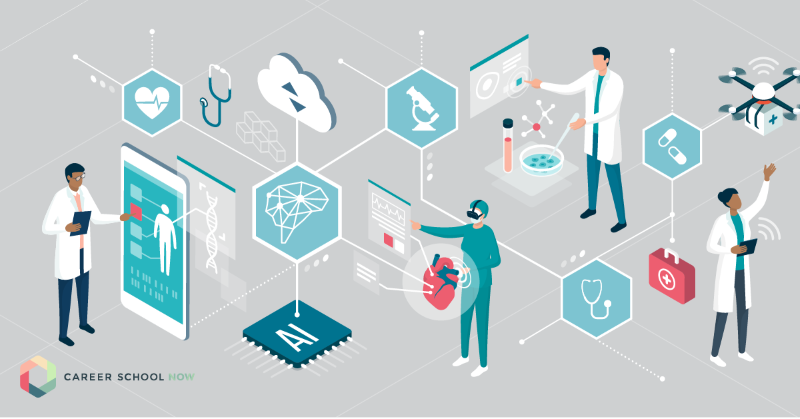A Complete Guide to Medical Administration Certifications and Certifications
A Complete Guide to Medical Administration Certifications and Certifications
Blog Article
Ideal Practices in Medical Administration for Improving Efficiency and Reducing Costs
In the ever-evolving landscape of health care, the quest of best practices in medical management is critical for boosting efficiency and suppressing expenses. By integrating innovative innovations such as electronic wellness records and telemedicine, healthcare service providers can improve operations and boost person care.
Leveraging Advanced Modern Technology
The assimilation of electronic remedies into health care systems has actually changed the method facilities run, improving processes and improving patient care. By streamlining individual information, EHRs remove the need for difficult paperwork and facilitate smooth interaction among healthcare companies.
Telemedicine is one more technological advancement that has reinvented patient communication. It uses comfort for both clients and health care specialists by making it possible for remote assessments, which can lower the need for in-person check outs and optimize appointment scheduling. In addition, telehealth platforms can extend health care access to rural or underserved areas, connecting gaps in treatment delivery.
Additionally, making use of Artificial Intelligence (AI) and artificial intelligence is becoming progressively widespread in predictive analytics, permitting very early discovery of potential health and wellness concerns and even more enlightened decision-making. These technologies, when incorporated successfully, can improve diagnostic precision and personalize patient therapy strategies, inevitably leading to boosted healthcare end results and operational performance.
Optimizing Source Appropriation
By strategically handling resources such as workers, tools, and financial resources, health care facilities can substantially enhance their operational performance, boost individual outcomes, and decrease unneeded expenses. The initial action in optimizing source allowance entails performing a detailed assessment of existing possessions and identifying locations where sources may be underutilized or exhausted.
Focusing on resource appropriation based on person requirements and service needs is essential. This involves aligning sources with high-demand locations, such as emergency situation treatment or specialized therapies, to make sure prompt and effective patient treatment. Executing flexible staffing versions can additionally optimize labor resources by adjusting workers allowance in reaction to changing client quantities. In addition, embracing telemedicine and various other technological options can reduce physical source restrictions by providing alternative avenues for patient-provider interactions.
Financial resources need to be thoroughly kept track of and alloted with calculated foresight to sustain both temporary operational needs and long-lasting institutional objectives. This includes investing in training programs that enhance team proficiencies and taking on energy-efficient methods that minimize operational costs (medical administration). Inevitably, an optimized source allotment strategy promotes a lasting health care atmosphere that is receptive, reliable, and monetarily prudent
Streamlining Operations Procedures
When healthcare centers objective to enhance operational performance, streamlining workflow processes ends up being a critical focus. Reliable process reduce redundancy, remove unneeded steps, and boost coordination amongst medical care professionals. This technique not just increases solution delivery yet also enhances the quality of person treatment.

Next, innovation integration plays a significant function in enhancing process. Carrying out electronic health and wellness records (EHRs) and electronic doctor order access (CPOE) systems reduces paperwork, minimizes human error, and makes certain details comes to all appropriate employees. Furthermore, leveraging telemedicine systems can streamline individual appointments and follow-ups, lowering the strain on physical framework.

Eventually, streamlined workflows lead to cost reductions and improved person contentment, promoting a much more lasting health care setting.
Enhancing Data Management
Building upon streamlined process, maximizing information monitoring comes to be a vital component ahead of time health care administration. Efficient data administration systems are critical for preserving accurate individual records, boosting decision-making, and making sure compliance with regulative standards. By carrying out durable information more tips here monitoring services, healthcare facilities can improve the quality of patient treatment while all at once minimizing operational expenses.
One key aspect of improving data monitoring is the integration of innovative electronic health record (EHR) systems. These systems facilitate the smooth exchange of patient info throughout different departments, reducing duplication of tests and lessening mistakes. A well-designed EHR system sustains data analytics, making it possible for healthcare carriers to determine trends and make notified choices relating to client important source care.
Moreover, safeguarding patient information is vital. Embracing detailed cybersecurity steps, including file encryption and routine audits, makes certain the honesty and confidentiality of delicate information. This not only secures individuals but likewise keeps the institution's online reputation.
Purchasing team training is an additional essential variable. Educating healthcare specialists on data management methods enhances their capacity to successfully use modern technology, causing boosted patient results. Finally, boosting information monitoring with innovative technology and extensive training is necessary for accomplishing efficiency and price reduction in clinical administration.
Fostering Collaborative Communication
A critical element in advancing medical management is cultivating joint interaction amongst health care specialists. Efficient interaction is extremely important for making certain smooth patient care, optimizing treatment outcomes, and lessening errors. By encouraging open discussion and sychronisation throughout multidisciplinary teams, medical care companies can boost their functional efficiency and lower unneeded expenses.
Central to this technique is the integration of communication technologies such as electronic wellness records (EHRs) and protected messaging systems, which promote the fast exchange of crucial patient information. These devices enable healthcare carriers to gain access to and share information in actual time, guaranteeing that all employee are informed and lined up in their decision-making processes. Moreover, normal group conferences and interdisciplinary rounds can better promote a culture of collaboration and accountability.
Educating programs concentrated on improving interaction skills are also essential. These programs can help staff establish the ability to convey details plainly and listen actively, therefore decreasing misconceptions and fostering a supportive workplace. Additionally, embracing standardized interaction protocols, such as SBAR (Circumstance, History, Evaluation, Suggestion), can streamline the exchange of info, making sure that essential details are communicated succinctly and successfully. Eventually, fostering joint communication results in enhanced medical care distribution and price savings (medical administration).

Verdict
Integrating advanced innovation, such as electronic YOURURL.com health documents and telemedicine, along with maximized source allowance and streamlined workflow processes, is vital for enhancing effectiveness in clinical administration. Reliable data administration and fostering collaborative interaction amongst healthcare groups are crucial for reducing redundancies and improving care quality. By prioritizing precautionary care and taking part in top quality renovation efforts, medical care companies can accomplish substantial price financial savings and boosted person end results, therefore making sure sustainable healthcare delivery in a progressively complicated environment.
Report this page